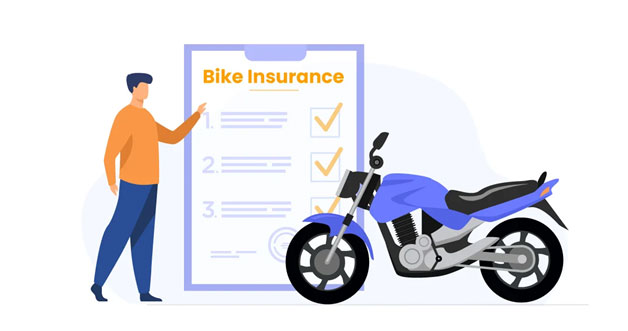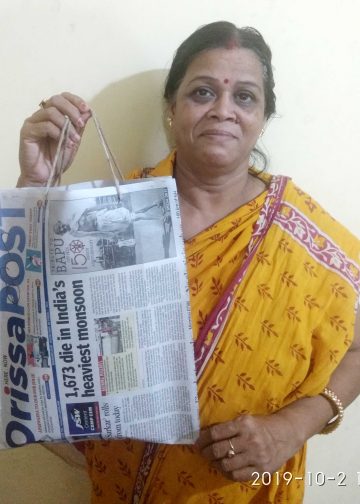When purchasing a new bike, one of the most important steps is securing the right bike insurance to protect your investment. With numerous options available, finding the best premium rate can seem daunting. However, understanding how insurance companies calculate premiums can help you make an informed decision. Factors such as the bike’s make, model, age, and your riding history play a key role in determining the cost. By comparing different plans and considering add-ons, you can find a policy that offers optimal coverage without straining your budget. This guide will help you navigate the process and get the best premium rate for your new bike insurance.
1) Understand your insurance options
Choosing the correct type of policy is the first step toward managing your premium.
- Third-party bike insurance
This is the most basic and legally mandated form of insurance. Third-party bike insurance covers financial and legal liabilities in the event that your bike causes damage to another person, vehicle, or property. It does not cover damages to your bike. - Comprehensive bike insurance
This includes third-party bike insurance liability and also covers damage to your vehicle resulting from accidents, theft, fire, natural disasters (such as floods or earthquakes), and man-made events (like riots or vandalism). Some comprehensive policies also include a personal accident cover for the owner-driver.
A comprehensive cover is valid for damages caused by fire, explosion, lightning, self-ignition, burglary, theft, natural calamities, accidents, malicious acts, and during transit. However, it does not cover damage caused while riding under the influence, outside India, or due to mechanical failure.
With platforms like TATA AIG, you gain the added benefit of an extensive network of over 7,500 garages, enabling you to easily get repairs done, further strengthening the comprehensive coverage.
2) Select the right IDV (Insured Declared Value)
Insured Declared Value is the maximum sum payable by the insurer in case of theft or total loss of the vehicle. It directly affects your premium.
IDV is derived from the manufacturer’s listed selling price minus depreciation based on the bike’s age. For instance:
- Less than 6 months old: 5% depreciation
- 6 months to 1 year: 15%
- 1–2 years: 20%
- Over 5 years: 50%
A higher IDV ensures better compensation, but it also comes with a higher premium. A lower IDV means cheaper premiums, but you may receive a lower payout in the event of a total loss. Always strike a balance based on your bike’s age and current market value.
3) Make the most of No Claim Bonus (NCB)
If you have not made any claims during the previous policy year, you are eligible for a No Claim Bonus—a discount on the renewal premium.
The NCB starts at 20% for one claim-free year and can go up to 50% after five consecutive claim-free years. If you’re switching insurers, the bonus is transferable.
Avoid filing minor claims if the cost of repairs is less than the NCB discount you stand to gain during renewal. This is a straightforward and effective way to reduce your premium over time.
4) Opt for a higher voluntary deductible
Deductibles refer to the portion of the claim amount you choose to pay out of pocket. A compulsory deductible is fixed, but you can opt for a voluntary deductible to reduce your premium.
By bearing a higher voluntary deductible, you reduce the insurer’s liability, which in turn reduces your premium. However, this makes sense only if you are confident about maintaining a low claim frequency.
5) Install ARAI-certified safety devices
Installing anti-theft devices approved by the Automotive Research Association of India (ARAI) adds a safety layer to your bike and reduces the risk for insurers. In return, you receive a small but valuable discount on your premium.
Devices like alarms, locks, and GPS tracking systems not only help lower insurance costs but also give you peace of mind against theft.
6) Be careful with modifications
Adding fancy accessories or modifying your bike’s engine may make it look better or run faster, but these changes increase your vehicle’s risk profile. Modified bikes are often more expensive to repair or replace, which results in higher premiums.
Keep modifications to a minimum if you’re aiming for the best rate. If you do make modifications, always inform your insurer to ensure full claim validity.
7) Choose a long-term insurance plan
Choosing a long-term two-wheeler insurance policy (up to 3 years) helps lock in the premium rate and protects against annual price increases. This also prevents the risk of policy lapse due to missed renewals and saves you the hassle of yearly paperwork.
A multi-year plan also protects your accumulated No Claim Bonus during the term, ensuring greater savings at the time of renewal.
8) Pick only relevant add-on covers
Add-ons enhance the scope of your policy but also increase your premium. Here are some commonly available add-ons and when to consider them:
- Zero Depreciation Cover: Ideal for new bikes, this covers full claim value without deducting depreciation.
- Return to Invoice: This feature is helpful in cases of theft or total damage, reimbursing the on-road price of your bike.
- Roadside Assistance: A wise choice if you often ride long distances.
- Consumables Cover: Reimburses the cost of items like nuts, bolts, engine oil, and brake fluid.
- Emergency Medical Expenses: Covers medical treatment for the rider and pillion after an accident.
Only select add-ons that match your usage, budget, and lifestyle. You can always skip the ones you do not need.
9) Buy your policy online
Online policy purchases are generally more affordable than purchasing from agents or offline branches. Insurance companies save on administrative costs and pass some of that benefit to you through online discounts.
When buying online, you also get instant quotes, access to premium calculators, and complete transparency about coverage, exclusions, and pricing. This empowers you to make a more informed and better decision.
10) Use premium calculators before purchase
A premium calculator is a simple online tool that lets you estimate the cost of your bike insurance. It factors in the model, IDV, add-ons, and location to help you find a plan within your budget.
You can try various combinations of coverage, add-ons, and IDV to understand how your choices affect your premium. This makes the selection process easier and more cost-effective.
Smart steps for a lower premium
Choose the right type of policy based on how often you use your bike.
- Pick an appropriate IDV (Insured Declared Value) – not too low, not too high.
- Keep your No Claim Bonus by avoiding small claims.’
- Opt for voluntary deductibles if you’re confident about making fewer claims.
- Install certified safety devices on your bike.
- Avoid unnecessary modifications to your bike.
- Go for long-term policies for more stable rates.
- Select only the most relevant add-ons.
- Buy or renew your policy online for convenience.
- Use premium calculators to better plan and compare your options.
Conclusion
A good bike insurance policy is one that strikes the right balance between price and protection. It should give you financial security on the road, peace of mind in emergencies, and legal coverage without burning a hole in your wallet. By applying these smart strategies, you can make sure you get the best premium rate without compromising on essential benefits.
Insurance is the subject matter of solicitation. For more details on benefits, exclusions, limitations, terms and conditions, please read sales brochure/policy wording carefully before concluding a sale.






































